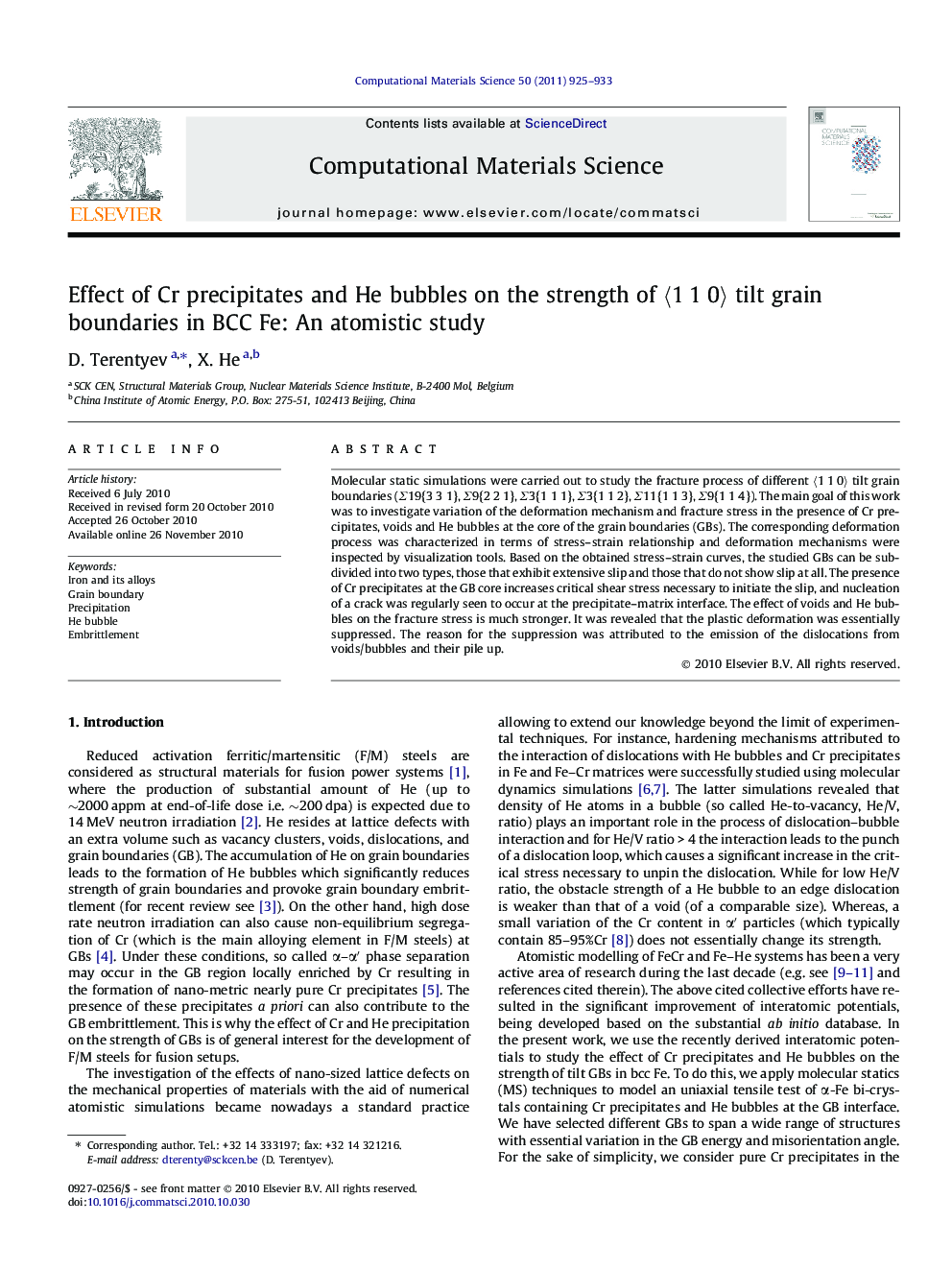| Article ID | Journal | Published Year | Pages | File Type |
|---|---|---|---|---|
| 1562373 | Computational Materials Science | 2011 | 9 Pages |
Molecular static simulations were carried out to study the fracture process of different 〈1 1 0〉 tilt grain boundaries (Σ19{3 3 1}, Σ9{2 2 1}, Σ3{1 1 1}, Σ3{1 1 2}, Σ11{1 1 3}, Σ9{1 1 4}). The main goal of this work was to investigate variation of the deformation mechanism and fracture stress in the presence of Cr precipitates, voids and He bubbles at the core of the grain boundaries (GBs). The corresponding deformation process was characterized in terms of stress–strain relationship and deformation mechanisms were inspected by visualization tools. Based on the obtained stress–strain curves, the studied GBs can be subdivided into two types, those that exhibit extensive slip and those that do not show slip at all. The presence of Cr precipitates at the GB core increases critical shear stress necessary to initiate the slip, and nucleation of a crack was regularly seen to occur at the precipitate–matrix interface. The effect of voids and He bubbles on the fracture stress is much stronger. It was revealed that the plastic deformation was essentially suppressed. The reason for the suppression was attributed to the emission of the dislocations from voids/bubbles and their pile up.
Research highlights► We investigate an influence of the nanometric lattice defects (void, He bubbles and Cr precipitates) on the strength of grain boundaries in bcc Fe. ► We apply Molecular Dynamics simulations to consider deformation of different <110> tilt grain boundaries (GBs), namely: Σ19{3 3 1}, Σ9{2 2 1}, Σ3{1 1 1}, Σ3{1 1 2}, Σ11{1 1 3}, Σ9{1 1 4}. ► We reveal that the considered GBs can be subdivided into two types, those that exhibit extensive plastic deformation and those that do not show any slip at all. ► The presence of Cr precipitates at the GB core increases critical shear stress necessary to initiate slip, and nucleation of a crack was regularly seen to occur at the precipitate-matrix interface. ► The effect of voids and He bubbles on the fracture stress and strain is much stronger as compared to Cr precipitates.
